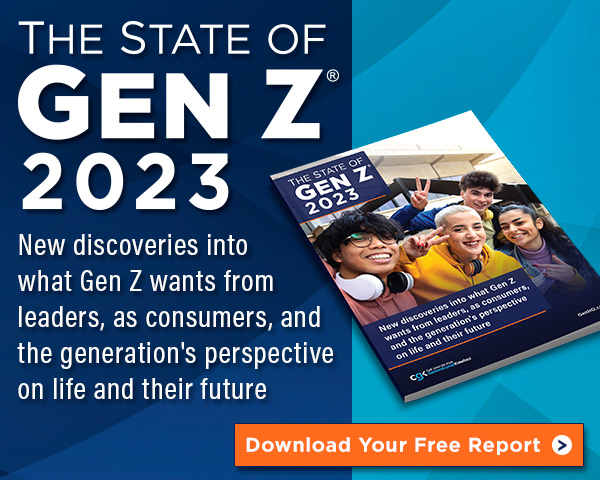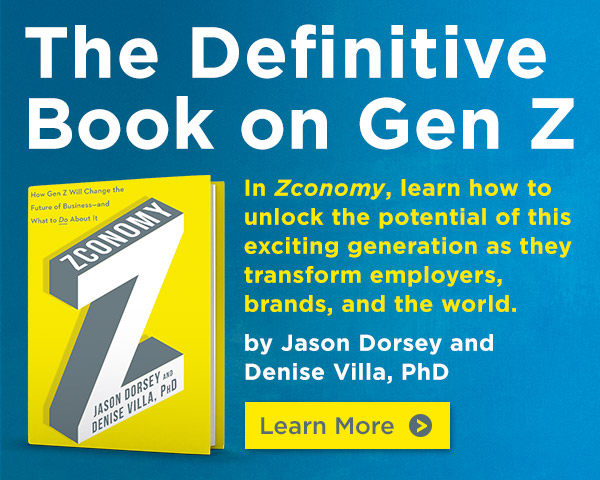Generational breakdown: info about all of the generations
CGK's Research Informs Global Conversation
AN INTRO TO GENERATIONS
Generations can be confusing. This page is dedicated to answering common questions about generations and to give context to bigger generational conversations on topics such as differences, similarities, and trends in employment, shopping, voting, and more. If we don’t answer your question here, contact us and we’ll do our best to help! Just think of us as your go-to nerd for all things generations.
Generations exhibit similar characteristics—such as communication, shopping, and motivation preferences—because they experienced similar trends at approximately the same life stage and through similar channels (e.g., online, TV, mobile, etc.). Generation-shaping trends are most influential as people come of age, which means that members of a particular generation will develop and share similar values, beliefs, and expectations. It is important to remember that at an individual level, everyone is different. But looking at people through a generational lens offers useful predictability for those trying to reach, inform, or persuade a large cross-section of a population.
- What shaped each generation
- The current characteristics, thought processes, expectations, and preferences for each generation
- Where generations are heading in the near and long-term future
- Gen Z, iGen, or Centennials: Born approximately 1996 – 2015
- Millennials or Gen Y: Born approximately 1977 – 1995
- Generation X: Born approximately 1965 – 1976
- Baby Boomers: Born approximately 1946 – 1964
- Traditionalists or Silent Generation: Born approximately 1945 and before
- People who talk about generations have reached different conclusions—and, frankly, a lot of people don’t do actual research, so they’re just guessing.
- Generation birth years vary by geography, and you’ll see varying characteristics in different parts of the world. The big events that affect a generation can be dramatically different across the globe or at least regionalized or national in scope, and trends can hit at different times.
1. What is the definition of a generation?
A generation is a group of people born around the same time and raised around the same place. People in this “birth cohort” exhibit similar characteristics, preferences, and values over their lifetimes. At The Center for Generational Kinetics, we believe that generations are not a box; instead, they are powerful clues showing where to begin connecting with and influencing people of different ages. There are big differences between the generations and it’s important to know the years when each generation begins and ends. We specialize in the relationship between geography and generations. Millennials, for example, are the most consistent generation globally. However, we still see important differences between Millennials raised in an urban environment versus those raised in a rural one or those who move to a new country.
2. What makes generations consistent at a high level?
3. What does The Center For Generational Kinetics do?
At CGK, we study generations and their behaviors to identify the following:
- What shaped each generation
- The current characteristics, thought processes, expectations, and preferences for each generation
- Where generations are heading in the near and long-term future
Creating an accurate snapshot of generations, where they come from, where they are now, and where they’re heading helps our team drive results for clients and inform larger conversations around the workforce, marketplace, and social norms. We help our clients with services that focus on the generations to create success and growth. Those services include custom generational research and keynote speaking.
4.What makes studying generations interesting and different?
5. What are the primary generations today?
Currently, five generations make up our society. Each of those five generations has an active role in the workforce, marketplace, and communities. Depending on the specific employer, the workforce includes four to five generations. Here are the birth years for each generation:
- Gen Z, iGen, or Centennials: Born approximately 1996 – 2015
- Millennials or Gen Y: Born approximately 1977 – 1995
- Generation X: Born approximately 1965 – 1976
- Baby Boomers: Born approximately 1946 – 1964
- Traditionalists or Silent Generation: Born approximately 1945 and before
6. Why do I see different birth years in different places?
The reason you see different birth years is two-fold:
- People who talk about generations have reached different conclusions—and, frankly, a lot of people don’t do actual research, so they’re just guessing.
- Generation birth years vary by geography, and you’ll see varying characteristics in different parts of the world. The big events that affect a generation can be dramatically different across the globe or at least regionalized or national in scope, and trends can hit at different times.
For example, being a Millennial in Athens, Greece, with its current unemployment situation, can lead to different expectations and behaviors than being a Millennial in Austin, Texas at the exact same time, where the job market is fantastic. The more you focus on one geography and one set of birth years, the more accuracy you’ll find. Click here for how we determine when each generation starts and stops.
7. What do we know about the newest generation, Gen Z (also known as Generation Z, iGen, and the Centennials)?
The end of the Millennial generation and the start of Gen Z in the United States are closely tied to September 11, 2001. That day marks the number-one generation-defining moment for Millennials. Members of Gen Z—born in 1996 and after—cannot process the significance of 9/11 and it’s always been a part of history for them. CGK is currently conducting research on this newest generation and we will be releasing interesting findings in the near future!
8. What are three key trends that shape generations?
9. Why are Millennials getting so much attention now?
In the last two years, Millennials have become the largest generation in the U.S. workforce. Millennials are also the fastest-growing generation of customers in the marketplace, bringing the greatest lifetime value. In addition, Millennials exhibit different attitudes toward employment, sales, and marketing, which are challenging many conventional strategies and approaches. No wonder everyone’s talking about Millennials—but are they really different? How and why are they different? What can employers, marketers, politicians, educators, and parents do?
Now Millennials have something to look out for, too: the next generation. Known as Gen Z, Generation Z, iGen, or Centennials, this new group of people is making big waves in all the ways a generation possibly could—including parenting, education, employment, entrepreneurship, sales, marketing, politics, religion, and more.
Now Millennials have something to look out for, too: the next generation. Known as Gen Z, Generation Z, iGen, or Centennials, this new group of people is making big waves in all the ways a generation possibly could—including parenting, education, employment, entrepreneurship, sales, marketing, politics, religion, and more.
10. Where can I get the latest generational research?
Subscribe to our e-newsletter, and you’ll get our latest findings in addition to other findings we think are important. You can also read the stories on the State of Gen Z or contact us. We are here to help!

